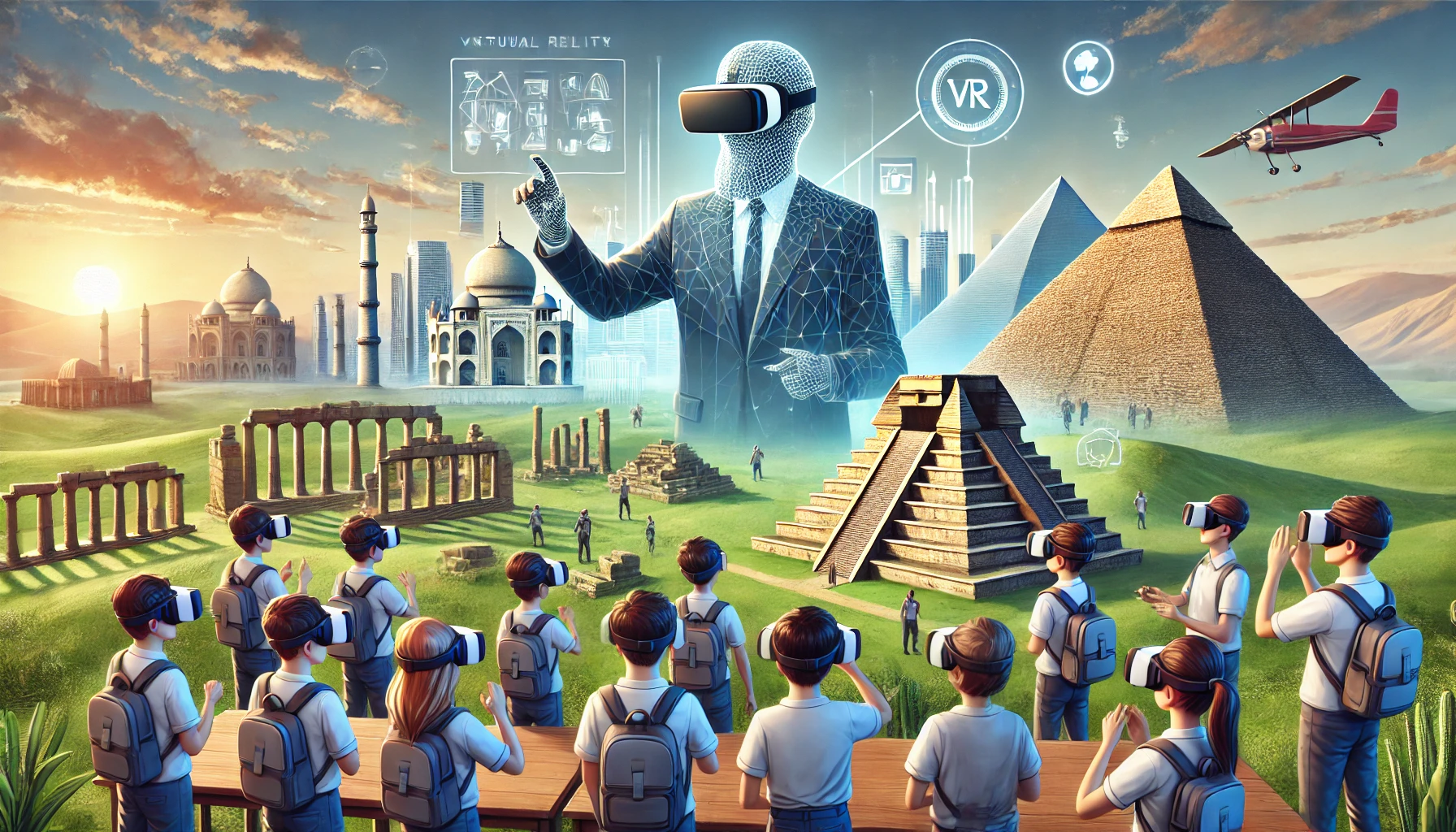SenseXR AR-VR Controller For Smartphone Buy Now
VIRTUAL REALITY- NEW MEDIUM FOR EDUCATION

Virtual reality (VR) is emerging as a revolutionary medium in education, offering immersive, interactive experiences that traditional methods can’t match. Here’s how it’s transforming the educational landscape:

1. Immersive Learning Experiences
Virtual Reality enables students to explore environments they wouldn’t have access to otherwise. For example, students can take a virtual tour of ancient civilizations, explore the human body in 3D, or simulate scientific experiments in a risk-free environment. This hands-on, experiential learning approach helps students grasp complex concepts more effectively.
2. Enhanced Engagement and Retention
By engaging multiple senses, Virtual reality makes learning more interactive and exciting. Instead of passively reading or listening, students actively participate in scenarios, increasing their interest and retention. This level of engagement is especially beneficial for subjects that are traditionally harder to visualize, like physics, chemistry, or biology.
3. Safe and Controlled Environment for Practice
In fields like medicine, engineering, and other technical disciplines, VR allows students to practice skills in a controlled, safe environment without real-world consequences. Whether it’s performing surgery or assembling machinery, VR enables repetition and experimentation in ways that classroom learning can’t.
4. Remote and Collaborative Learning
Virtual Reality breaks down geographical barriers, allowing students from different parts of the world to collaborate and learn together in a shared virtual space. With the rise of virtual classrooms and virtual reality platforms, distance learning becomes more interactive, simulating the in-class experience while enabling global learning networks.
5. Learning at One’s Own Pace
VR-based education platforms can be designed to adapt to the learner’s pace. Students can pause, rewind, or revisit learning modules whenever needed. This individualized approach supports better learning outcomes, catering to students with different learning styles.
6. Cost-Effective and Scalable
In the long run, VR can provide a cost-effective solution for institutions by replacing expensive physical infrastructure with virtual labs, field trips, and classrooms. The scalability of VR allows schools and universities to offer rich, diverse content across multiple subjects without needing significant physical investments.
Examples of VR in Education:
- STEM Learning: Virtual simulations of science experiments, space exploration, or molecular biology.
- History and Culture: Virtual tours of historical landmarks, cultural heritage sites, and museums.
- Vocational Training: Practice technical skills like welding, automotive repair, or electrical work in virtual environments.
- Special Education: VR can create tailored, sensory-rich environments for students with learning disabilities, allowing them to engage in ways that traditional methods can’t offer.
Virtual Reality (VR) is proving to be a powerful medium for transforming education, making learning more immersive, personalized, and engaging.
If you want to make your child’s learning journey more engaging. You can Explore SenseXR AR-VR Educational Controller .
For related content